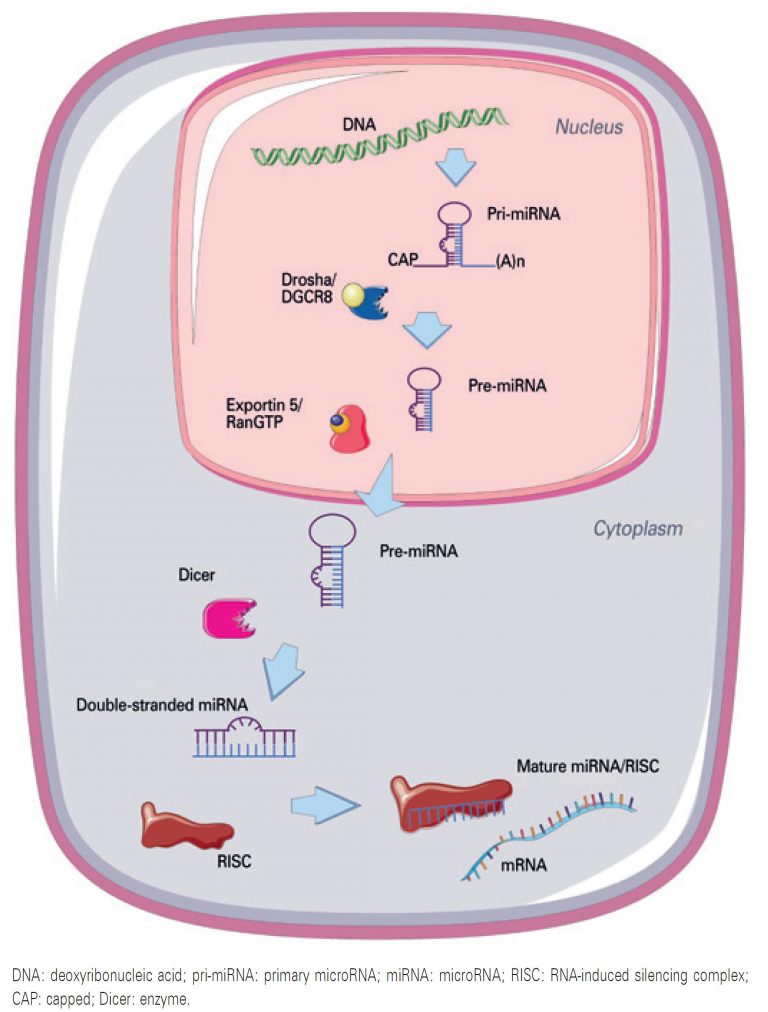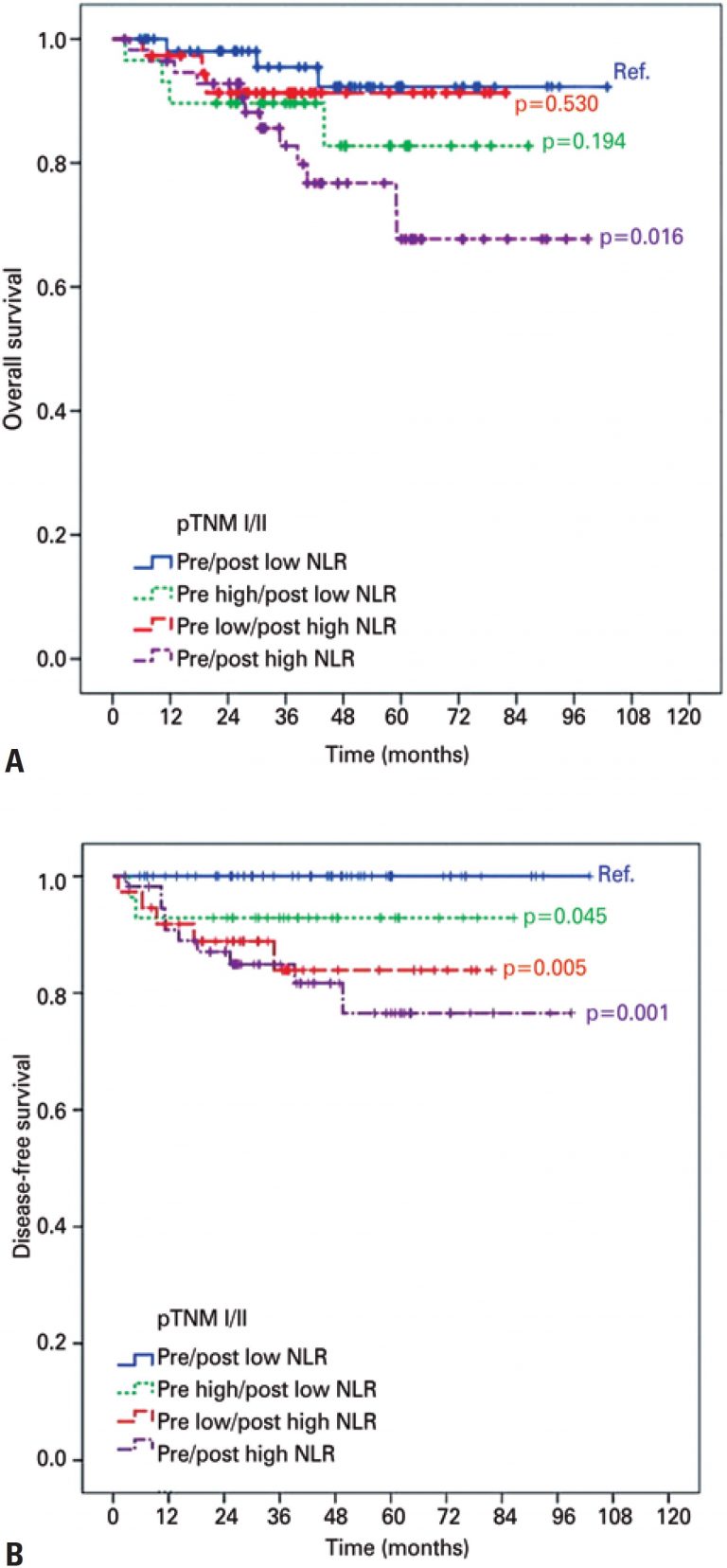23/Feb/2022
MicroRNAs and exosomes: promising new biomarkers in acute myeloid leukemias?
DOI: 10.31744/einstein_journal/2022RB5954
ABSTRACT Despite advances in understanding of carcinogenesis and of treatment of acute myeloid leukemia, this neoplasm still has a lethality of at least 30%. The search for biomarkers that can predict the response to treatment in the early stages of the disease is still necessary. In recent years, a new form of cellular communication between tumor and non-neoplastic cells has been discovered: the exchange of information through extracellular vesicles. These are small vesicles released by membrane-coated cells that carry proteins, […]
Keywords: Biomarkers; Exosomes; Immunomodulation; Leukemia, myeloid, acute; MicroRNAs
08/Jul/2021
MicroRNAs: understanding their role in gene expression and cancer
DOI: 10.31744/einstein_journal/2021RB5996
ABSTRACT MicroRNAs are small RNA molecules that regulate gene expression in cells. These small molecules comprise 17 to 25 nucleotides and are able to recognize target messenger RNAs by sequence complementarity and regulate their protein translation. Different microRNAs are expressed in all human cells. There is over 2,500 microRNAs described in humans that are involved in virtually all biological processes. Given their role as gene expression regulators, these molecules have been widely investigated and are thought to be associated with […]
Keywords: Biomarkers; Gene expression; MicroRNAs; Neoplasms
15/Apr/2021
Overview of miRNAs for the non-invasive diagnosis of endometriosis: evidence, challenges and strategies. A systematic review
DOI: 10.31744/einstein_journal/2021RW5704
ABSTRACT Objective The aim of the study was to assess the evidence on miRNAs as biomarkers for the diagnosis of endometriosis, as well as to provide insights into the challenges and strategies associated with the use of these molecules as accessible tools in clinical practice. Methods Systematic review conducted on PubMed®, Latin American and Caribbean Health Sciences Literature (LILACS), MEDLINE® and Web of Science databases using the search terms endometriosis (all fields) AND miRNA (all fields), evaluating all publication up […]
Keywords: Biomarkers; Body fluids banks; Endometriosis/diagnosis; MicroRNAs; Saliva; Serum; Vaginal fluid
14/Nov/2019
Neutrophil-lymphocyte ratio change after curative gastrectomy for gastric cancer: a subgroup analysis
DOI: 10.31744/einstein_journal/2020AO4860
ABSTRACT Objective: To evaluate the impact of neutrophil-lymphocyte ratio change after curative surgery for gastric cancer. Methods: A retrospective analysis of patients with gastric cancer who underwent curative surgery between 2009 and 2017 was performed. A cutoff value was established for the neutrophil-lymphocyte ratio in the pre- and postoperative periods, according to the median value, and four subgroups were formed (low-low/low-high/high-low/high-high). Clinical-pathological and survival data were analyzed and related to these subgroups. Results: A total of 325 patients were included […]
Keywords: Biomarkers; Gastrectomy; Inflammation; Prognosis; Stomach neoplasms
27/Aug/2019
Inflammatory biomarkers in sera of patients with intervertebral disc degeneration
DOI: 10.31744/einstein_journal/2019AO4637
ABSTRACT Objective: To evaluate intervertebral disc levels of inflammatory factor (interleukin 6) and proteinase activity (cathepsin B) in patients with a degenerative disease and serum levels of interleukin 6, serum cathepsin B activity and hyaluronic acid biomarkers. Methods: We conducted immunohistochemistry studies of intervertebral discs to analyze interleukin 6 and cathepsin B levels of patients with degenerative disease and spine fracture (Control Group) and to measure hyaluronic acid, interleukin 6 and cathepsin B activity from sera of intervertebral disc degeneration […]
Keywords: Biomarkers; Glycosaminoglycans; Intervertebral disc degeneration; Proteoglycans
01/Jan/2017
The cerebrospinal fluid in multiple sclerosis: far beyond the bands
DOI: 10.1590/S1679-45082017RW3706
ABSTRACT The cerebrospinal fluid analysis has been employed for supporting multiple sclerosis diagnosis and ruling out the differential diagnoses. The most classical findings reflect the inflammatory nature of the disease, including mild pleocytosis, mild protein increase, intrathecal synthesis of immunoglobulin G, and, most typically, the presence of oligoclonal bands. In recent years, new biomarkers have emerged in the context of multiple sclerosis. The search for new biomarkers reflect the need of a better evaluation of disease activity, disease progression, and […]
Keywords: Biomarkers; Cerebrospinal fluid; Chemokine CXCL13; Fetuins; Multiple sclerosis; Neurofilament proteins





